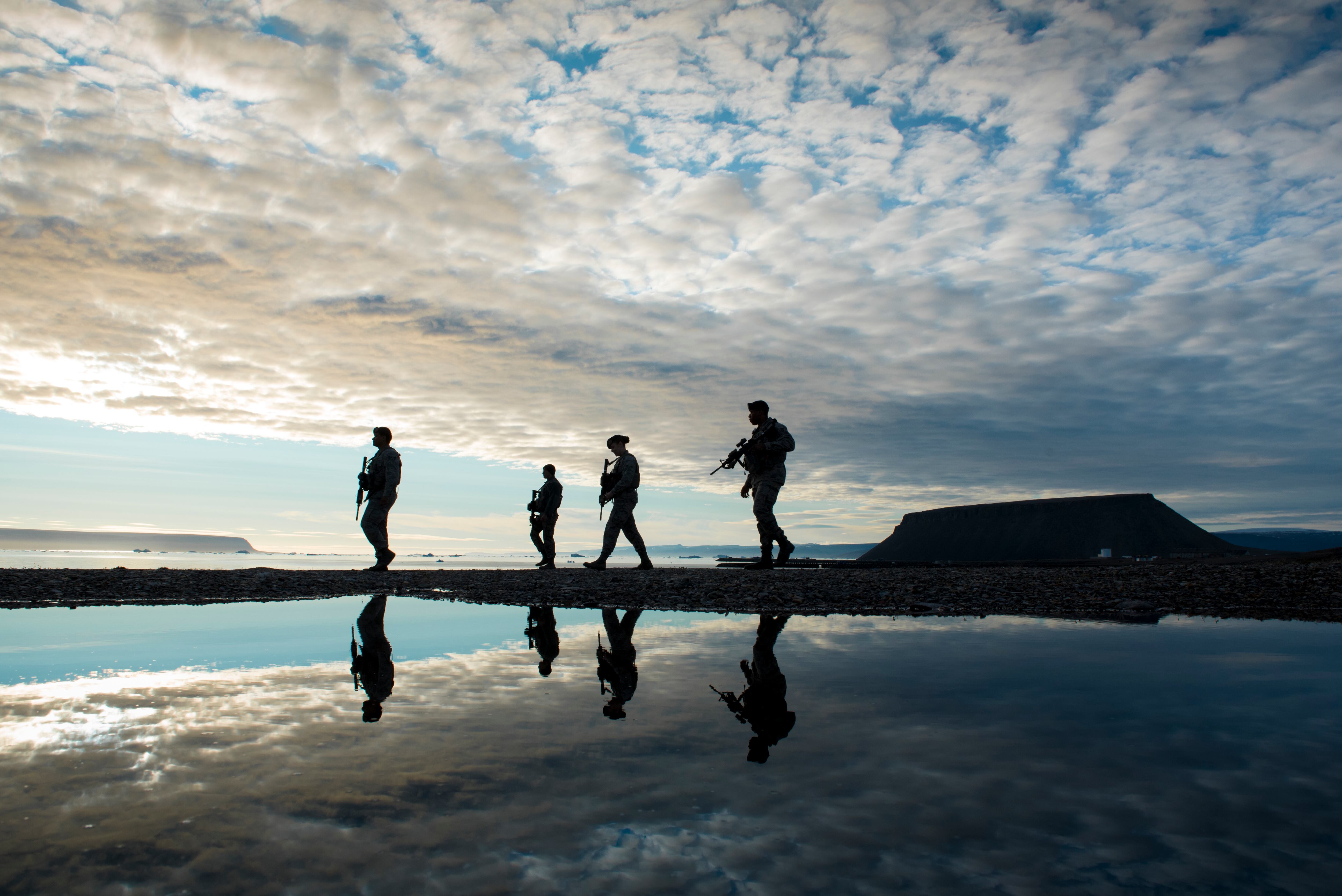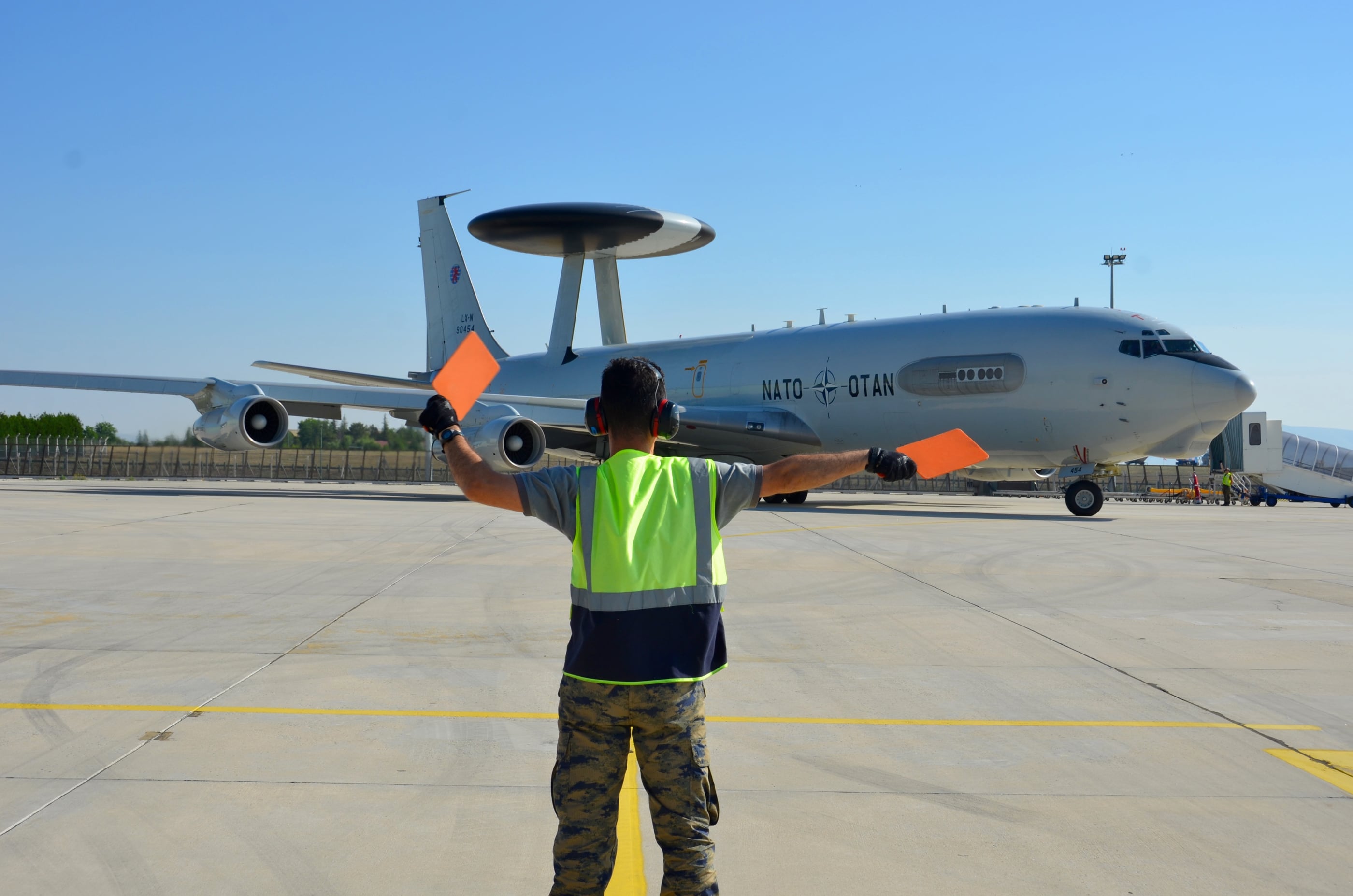TIKKAKOSKI, Finland — The Finnish Air Force is changing. In a matter of years, it will decide on its future fighter — a €7-€10 billion (U.S. $7.8-$11.2 billion) program that could tie Finland more closely to the country that wins the competition. It’s revamping its command-and-control infrastructure. And like other international air forces, it’s putting increased pressure on itself to boost readiness.
Maj. Gen. Pasi Jokinen, who became the commander of Finland’s Air Force in April, oversees the transformation. The job has its perks: During U.S. Air Force Chief of Staff Gen. Dave Goldfein’s trip to Finland in July — his first visit to the nation — the two officers took a break from meetings and sat backseat in two Finnish F/A-18 Hornets for a training mission. Goldfein later said the flight signified the growing trust between the two air forces.
Jokinen spoke on July 21 with Defense News, which traveled to Finland with Goldfein, about the service’s readiness challenges and its modernization priorities.
Tell me about your conversation here today with Gen. Goldfein.
Well, we talked about a lot of interesting topics. We talked about the operation environment and the Finnish Air Force and what we do here, and the cooperation with the U.S. and all that. He obviously was aware of a lot of things, but we went into very good detail about everything like that.
We know what’s happening here, we are strongly here, we are committed here and everything is running smoothly.
You said you talked about the operational environment for Finland right now. Can you characterize that, and is it changing?
Well, I think we have been using that word “new normal” after Crimea and after 2014, so activity in the Baltic region and in this region is in a little bit elevated level — let’s put it that way. And of course our eastern neighbor is actively doing things in Syria and eastern Ukraine. It has had some effects.
It seems that they have this big exercise cycle, [in] running the Zapad [exercise] and how they rotate the different regions. In 2017 we saw again this western Russia exercise, and it was noted. It was at peak activity level. Activity-wise, 2017 was the highlight, and now we are calmed down a little bit, but still we are above the level before 2014.
RELATED

Is it fair to say that the number of intercepts peaked in 2017?
Yeah, well, when their activity is high, our activity is high. And of course the Gulf of Finland, which is the international airspace nearby our border, that’s one of the areas of interest. You used the word “intercepts,” though; that activity is there. I mean, of course then they are operating also in the other, the northeast and eastern border, but that’s a solid border. I mean, obviously they are on their side and we are on our side. Then the international airspace where we meet, OK. The Gulf of Finland is mainly transit for mainland Russia to Kaliningrad and back, and in the southern Baltic Sea, or the Baltic sea down more south, there’s more room to maneuver, do stuff like that. Here is the very narrow — long but narrow — corridor that normally there is no operational type of maneuvers, neither side, but it’s a transit. But we like to know who is going where and all that.
Then obviously one the things are that they do not always use transponders or flight plans. There are no flight plans, so we need to find out who is there. That has improved a bit over the years. The equipment is newer and they have the western transponders and they use them, so it’s a little bit better situation that we had a few years back, but it’s not 100 percent covered with the flight plans or transponders.
As you look across the entire Air Force, what’s your No. 1 concern? Is it budget? Is it what you’re seeing threat-wise from potential adversaries?
Well, I’m not concerned about the adversary. Things are relatively stable. We have good relations in all the directions, all directions there. Defense forces in general has been resourced relatively well. The readiness, of course, requires some money. And of course the Army has had a bigger transition the last few years out of the services, from a training organization into a readiness organization.
There’s of course a need for more money, for operating money also. And the government has been giving quite good money in the last few years. Now the future is not that bright. I mean, there’s some dark clouds there. I’m concerned. Of course, the main procurement program, like the HX [fighter replacement program], seems to be well on track, and I’m very happy about that, and that is their main priority, of course, to keep that in schedule and in budget for the procurement side of the house.
People have been — I don’t know if “stressed” is the right word — but they have been under pressure for the readiness, and we’ve also gotten more vacant jobs. We are recruiting people, people on the field and into the practical work— so the aircraft maintenance, the surveillance tasks. It’s very important that the recruitment works.
Aside from HX, are there other modernization efforts that you’re trying to keep on track?
Well, we are, before the HX selection, before the HX comes in. Right now we are working on our C4I system. But we have had quite a lot of new pieces there and they are IOC [initial operational capability], becoming FOC [full operational capability].
Then whatever solution or whatever HX candidate is chosen, there is a requirement to be able to process and handle all that [information]. So we are working that before so when selection is done and it’s actually coming in, the infrastructure is prepared for that. Obviously we need to then fine-tune it, depending on the selection, at the end of the day, but right now we are working on the basic infrastructure.
What has Finland already fielded? What is coming up that is still in the planning stages or in the competitive stages?
For the C4 side of house? Well, OK, we’ve got our sensors, relative new sensors for the surveillance sensors. And our networks and the infrastructure and the servers, kind of like the infrastructure there, both the networks and for the servers. They are relatively new.
So it’s there, and we are getting that into use as we speak or in the near future. Then it’s all about the processes and methods and how to handle the data and how to use the data. So that’s something that people in organizations need to learn. Not the hardware, but the people need to learn, so that’s something that we are working on. Then, when we get the HX here and we know what it is, then we do the necessary adjustments. And it’s obviously platform-specific and [dependent on] the requirements there. In all cases, we need to be able to be better in joint warfare inside Finland with data services and of course maintain the international interoperability portion, whether it’s about tactical data links or whether it’s other things.
RELATED

Did you discuss interoperability with the U.S. Air Force with Gen. Goldfein?
Well, yeah, sure. Technology is one thing. You are interoperable and you can use the data and all that. But the processes [of] how you do it is one thing, but then there’s this policy side of the house, that if you don’t have the policy or to actually be there — interoperable all the time — then you just need to be prepared for that.
We are an independent nation. We are not a NATO member, and we are not doing common planning. We are operating as neighbors here. Our AOR [area of responsibility] and the EUCOM [U.S. European Command] AOR and NATO AOR, they are all overlapping or next to each other. Coordination and deconfliction [are] some things that we need to be ready to do. The policy is important and the SOPs [standard operating procedures] and all that.
The U.S. is interested in rapidly generating air power in times of crisis. How can the U.S. better defend its bases or set up new expeditionary air bases if needed? From what I understand, that’s something that Finland has the capability to do. Did that come up in conversation, and do you think that there are things that the U.S. can learn from Finland in that area?
In Finland, we have our main base. But yes, we can deploy and we can swarm, distribute our assets, and then have them under the command and control, and make centralized effects out of those distributed things. So yeah, that was talked about. Of course, it requires the ability to move and begin to move [your resources from the base]. It requires a good situational awareness and plans [for] how to do it, and then the timely execution of that. We’ve talked about the general concept, and yes, it was mentioned by Gen. Goldfein that they are looking for a more expeditionary mindset, that huge massive bases that you can generate the air power may not be the thing that you want to stick.
Finland is not that small [of an] area. There are smaller nations than us, but still in the global or the U.S. scale, it's still a small area. The thing is to look for the agility and mobility and know what's happening and do the right things from there, either move or disperse.
Is that a capability in which Finland continues to invest?
Yeah, it’s part of the HX program. So now the question is how much. It’s good for that fight that you distribute, but the main operation is get out there and do the job, then come back and you can go out again. That is the important thing — that you get the effect in the air, what you’re doing from the air or in the air.
Then it’s nice for the survivability part and all that to be distributed. That’s what we are still looking [at]. But then, to what extent? That is to be determined. We will find it out when the HX goes forward.
On HX, I understand Finland is looking for some industrial incentives. Has it become clear yet what each company might be willing to offer?
We are in the middle of the process. I don’t know whether the offers are final. We have the ideas that we are discussing. There is a requirement that we need to be able to do certain stuff in Finland, with the Finnish resources and [people with] Finnish passports. That is a requirement [that] is still there.
How do you think Finland will have to balance the cost of this project with the capability it wants?
That equation needs to be solved, but we have two years of time to solve it. We have the money — €7 billion to €10 billion. And we need to maximize the capability on that money.
Are you making additional investments in intelligence, surveillance and reconnaissance capabilities?
There is a desire to have the proper amount of ISR. Obviously the HX is going bring something into it, and we also have a recent area there that we are investigating. Probably when there’s better visibility, when we are actually selecting and getting through HX, then we [will] know where the gaps are, and then we are going to fill them in [with] other programs.
Valerie Insinna is Defense News' air warfare reporter. She previously worked the Navy/congressional beats for Defense Daily, which followed almost three years as a staff writer for National Defense Magazine. Prior to that, she worked as an editorial assistant for the Tokyo Shimbun’s Washington bureau.








